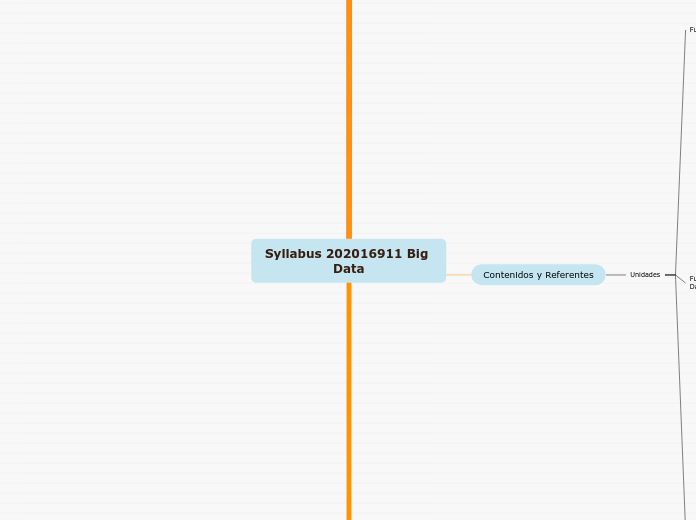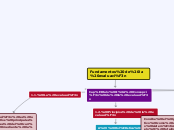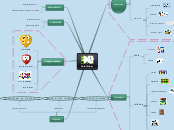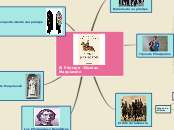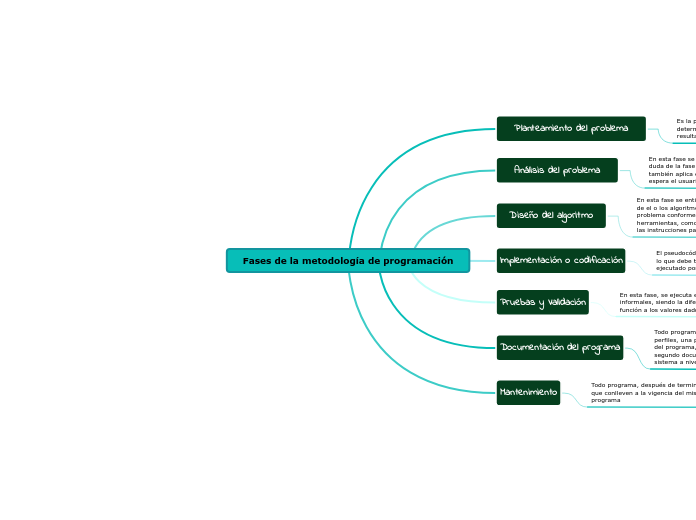Syllabus 202016911 Big Data
To name your story, you have to think about the overall message and what you want your audience to understand from the story. Also, make it relevant and easy to remember.
Estrategias de acompañamiento docente
Sesiones de chat en skype
Sesiones de conferencia en línea o webconference
Foros en campus virtual
Correo en campus virtual
Organización de las Actividades
Tarea 5: Actividad Final – Big Data para toma de decisiones.
Tarea 4: Soluciones y servicios Big Data.
Tarea 3: Fuentes y análisis de datos.
Tarea 2: Fundamentos de Big Data.
Tarea 1: Presaberes.
Contenidos y Referentes
Unidades
Soluciones y servicios Big Data
Phyton y Big Data
Miller, J. D. (2017). Big Data Visualization (pp. 222 - 240). Packt Publishing.
https://bibliotecavirtual.unad.edu.co/login?url=http://search.ebscohost.com/login.aspx?direct=true&db=e000xww&AN=1481581&lang=es&site=eds-live&scope=site&ebv=EB&ppid=pp_222
Lenguajes de programación en Big Data
Mittal, M., Balas, V. E., Hemanth, D. J., & Kumar, R. (2018). Data Intensive Computing Applications for Big Data (pp. 536 - 538). IOS Press.
https://bibliotecavirtual.unad.edu.co/login?url=https://search-ebscohost-com.bibliotecavirtual.unad.edu.co/login.aspx?direct=true&db=e000xww&AN=1791224&lang=es&site=ehost-live&ebv=EB&ppid=pp_536
Big Data con Hadoop
Karambelkar, H. V. (2015). Scaling Big Data with Hadoop and Solr - Second Edition: Vol. Second edition (pp 1 -20). Packt Publishing.
https://bibliotecavirtual.unad.edu.co/login?url=http://search.ebscohost.com/login.aspx?direct=true&db=nlebk&AN=986057&lang=es&site=eds-live&scope=site&ebv=EB&ppid=pp_1
Descripción de las herramientas Hadoop y Spark
Montoya Suarez, L. y Gil Restrepo, G. A. (2018). Actualidad e importancia de la implementación de Big Data utilizando las herramientas Hadoop y Spark. Lámpsakos, (19), 67-72. Universidad Católica Luis Amigó. https://elibro-net.bibliotecavirtual.unad.edu.co/es/lc/unad/titulos/126993
Fuentes y análisis de Datos
Métodos de extracción y análisis de datos
García Alsina, M. (2017). Big data: gestión y explotación de grandes volúmenes de datos (pp. 30 - 38). Editorial UOC. https://elibro-net.bibliotecavirtual.unad.edu.co/es/ereader/unad/116303?page=30
Proceso ETL
Castillo Romero, J. A. (2019). Big data (pp. 96 -97). IFCT128PO. IC Editorial. https://elibro-net.bibliotecavirtual.unad.edu.co/es/ereader/unad/124254?page=97
Arquitectura de un Sistema Big Data
Casas Roma, J. Nin Guerrero, J. y Julbe López, F. (2019). Big data: análisis de datos en entornos masivos (pp. 96-98). Editorial UOC. https://elibro-net.bibliotecavirtual.unad.edu.co/es/ereader/unad/117744?page=96
Tipología de datos
Casas Roma, J. Nin Guerrero, J. y Julbe López, F. (2019). Big data: análisis de datos en entornos masivos (pp. 84 - 85). Editorial UOC. https://elibro-net.bibliotecavirtual.unad.edu.co/es/ereader/unad/117744?page=84
Analítica Tradicional Vr. Big Data
Castillo Romero, J. A. (2019). Big data (pp. 89 - 91). IFCT128PO. IC Editorial. https://elibro-net.bibliotecavirtual.unad.edu.co/es/ereader/unad/124254?page=90
Fundamentos de Big Data
Visualización de Big Data
Miller, J. D. (2017). Big Data Visualization (pp. 6 - 26). Packt Publishing.
https://bibliotecavirtual.unad.edu.co/login?url=https://search-ebscohost-com.bibliotecavirtual.unad.edu.co/login.aspx?direct=true&db=nlebk&AN=1481581&lang=es&site=ehost-live&ebv=EB&ppid=pp_6
Fuentes y oportunidades del Big Data
Agnellutti, C. (2014). Big Data: an Exploration of Opportunities, Values, and Privacy Issues (pp. 6 - 9). Nova Science Publishers, Inc.https://bibliotecavirtual.unad.edu.co/login?url=https://search-ebscohost-com.bibliotecavirtual.unad.edu.co/login.aspx?direct=true&db=nlebk&AN=811106&lang=es&site=ehost-live&ebv=EB&ppid=pp_6
Fundamentos de una arquitectura de Datos
López Murphy, J. J. y Zarza, G. (2017). La ingeniería del big data: cómo trabajar con datos (pp. 72 - 81). Editorial UOC.
https://elibro-net.bibliotecavirtual.unad.edu.co/es/ereader/unad/59093?page=72
Las Vs del Big Data
Castillo Romero, J. A. (2019). Big data (pp. 157 - 158). IFCT128PO. IC Editorial. https://elibro-net.bibliotecavirtual.unad.edu.co/es/ereader/unad/124254?page=157
Conceptos Big Data
Castillo Romero, J. A. (2019). Big data (pp. 25 - 30). IFCT128PO. IC Editorial. https://elibro-net.bibliotecavirtual.unad.edu.co/es/ereader/unad/124254?page=25
Estrategia de aprendizaje
ABT, estrategia basada en tareas
Resultados de aprendizaje
The ending of a story is essential. We all know that if the ending is weak, what happened before loses its importance. So make it unpredictable, but fair. A resolved ending answers all the questions and ties up any loose threads from the plot.
Gestionar proyectos y sistemas de apoyo para la toma de decisiones
Emplear herramientas TI para la gestión de datos
Emplear técnicas y estrategias para análisis de datos
This is the closure section of the story.
See examples of possible outcomes below:
- all problems have been solved
- it's clear how each one of your characters ends up
- your main character is transformed by the challenge
Identificar necesidades y oportunidades de Big Data
Try answering these questions in order for you to come up with a closure:
- Have all problems been solved?
- Is it clear what happens with all your characters in the story?
- Has the challenged transformed your main character?
- How do the characters feel in the end?
Identificar los conceptos de Big Data
This is the moment when the main character surpasses the last obstacle and finally faces their greatest challenge.
The climax usually follows one of these patterns:
- realization
- resolution
- choice
Type in your answer.
Propósito de Formación
The middle of the story is where you add layers of complications that will lead to the end. Reveal more about the character's journey. Did their personality go through changes? How did they overcome the challenges? And as you build up the story’s central conflict, make it more personal to that character. Also, from the middle act, you have to lead into the final act.
Encaminar al estudiante
Each story has a main character and that character usually needs to solve a problem or challenge. The character's challenge is the one that creates tension throughout the story.
De la Conceptualización al aprovechamiento de datos mediante el análisis
Type in any other challenges which other characters in the story need to face.
Identificación del Curso
In the beginning of the story (or the exposition), you will need to introduce the setting and characters. You might also want to introduce the main conflict. This part of the story is important because it gives the reader necessary background information and maybe even a first insight into a character’s personality.
Número de créditos
3
Tipo de Curso
Metodológico
Nivel de formación
The setting (time & place) of a story can change throughout the plot.
Profesional
Sensory details include sight, sound, touch, smell, and taste. These details are important because they create depth in your setting.
See a few examples below:
- the smell of fresh bread
- the scent of freshly cut grass
- rain falling onto the windshield etc.
Unidad
Characters are essential to a good story. Usually, the protagonist(s) is/are the most affected by the plot. Introduce a character by focusing on their actions, interests, and occupation, as the physical appearance doesn't make a difference in most cases.
ECBTI
Type in the name of your character.
